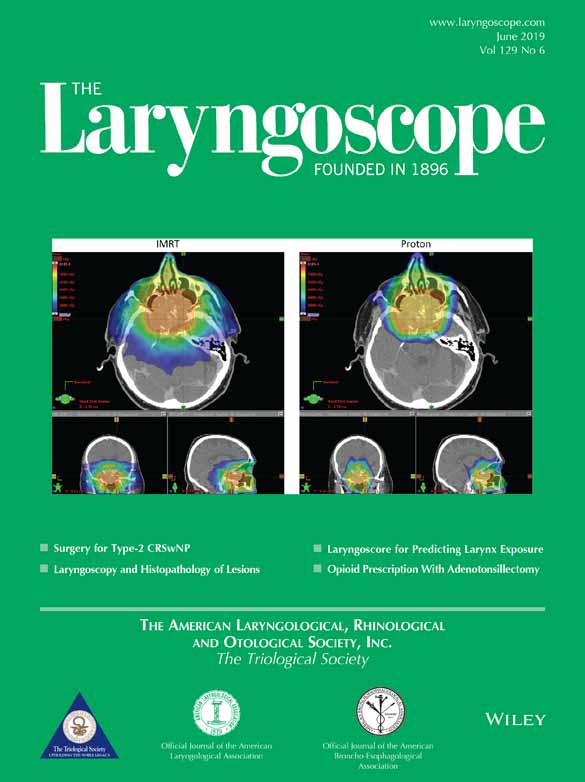Comparing the real and perceived cost of adenotonsillectomy using time-driven activity-based costing
Presented at the Triological Society's 2018 Annual Meeting Combined Otolaryngology Spring Meeting, National Harbor, Maryland, U.S.A., April 20, 2018, receiving second place in the Triological Society's 2018 Annual Meeting Poster Award's Clinical Fundamentals Category.
The authors have no funding, financial relationships, or conflicts of interest to disclose.
Abstract
Objective
This study aims to measure the costs of treating obstructive sleep apnea (OSA) in children with an adenotonsillectomy using time-driven activity-based costing (TDABC) and explore how this differs from cost estimates using traditional forms of hospital accounting.
Study Design
Prospective observational study.
Methods
A total of 53 pediatric patients with symptoms of OSA or sleep-related breathing disorder were followed from their initial appointment through surgery to their postoperative visit at an academic medical center. Personnel timing and overhead costs were calculated for TDABC analysis.
Results
Treating OSA with an adenotonsillectomy in a pediatric patient costs $1,192.61. On average, outpatient adenotonsillectomy costs $957.74 (80.31%); $412.18 of this cost ($4.89 per minute) was attributed to the overhead cost of the operating room. Traditional hospital accounting estimates outpatient adenotonsillectomy costs $2,987, with overhead attributing $11.27 per minute or $949.23 per case. 57% ($6.38 per minute) of the hospital's estimate for overhead was actually for equipment and implants used by different hospital services and not for equipment used in adenotonsillectomies.
Conclusion
Through TDABC, we were able to highlight how traditional RVU-based hospital accounting systems apportion all overhead costs, including items such as orthopedic implants, evenly across specialties, thus increasing the perceived cost of equipment-light procedures such as adenotonsillectomies. We suspect that providers who perform a TDABC analysis at their home institution or practice will find their own unique insights, which will help them understand and control the different components of healthcare costs.
Level of Evidence
2
Laryngoscope, 129:1347–1353, 2019




